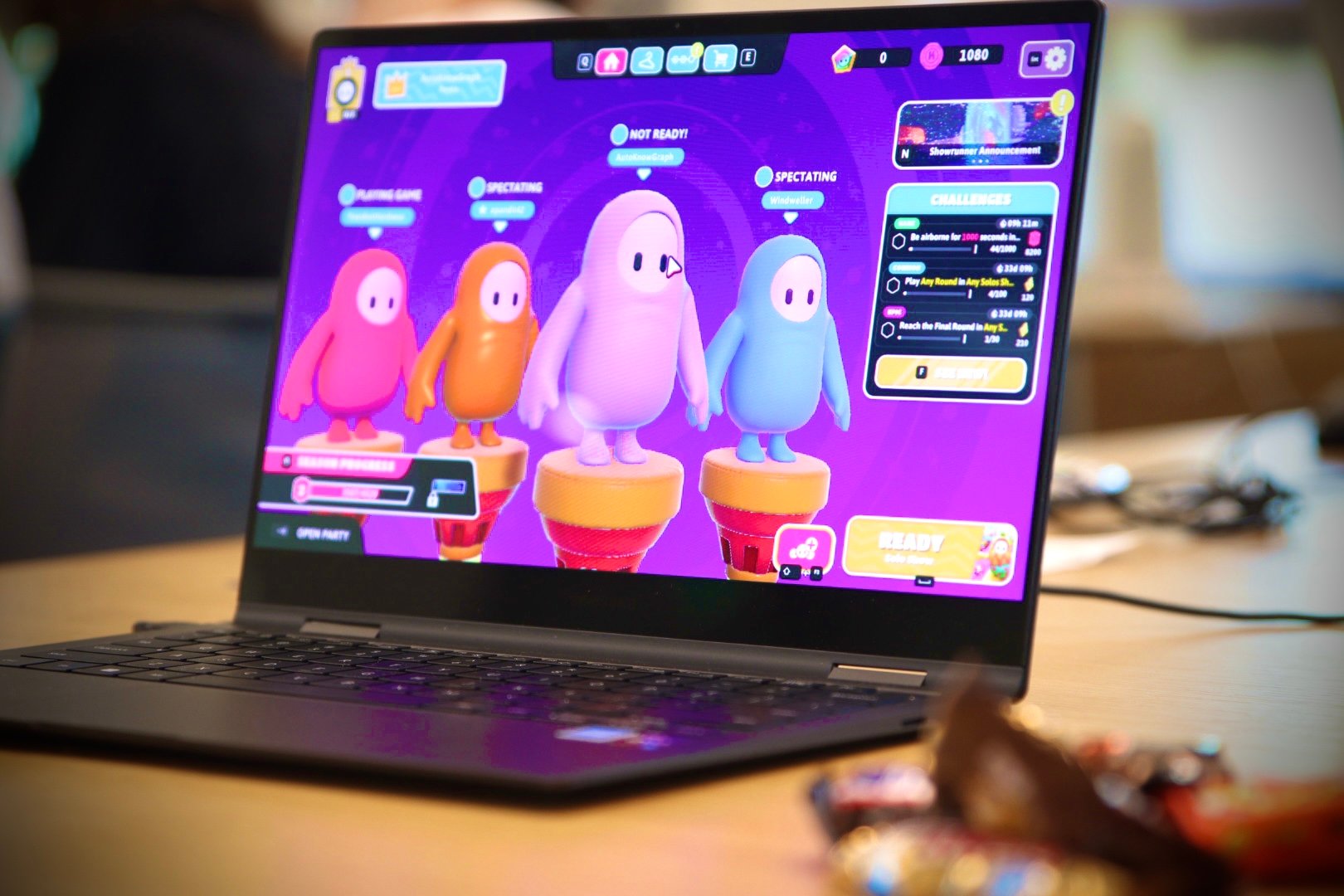Shrieks and groans build in a fourth-floor conference room in the Gates Computer Science Building as computer avatars slide across a technicolor wonderland of obstacles and opponents. Laughter fills the room, but there is no mercy between competitors. This is the Intergalactic “Spacewar!” Olympics.
Stanford’s Artificial Intelligence Laboratory celebrated the 50th anniversary of the Intergalactic “Spacewar!” Olympics, the world’s first video game tournament, Wednesday.
The original tournament, which was run by Rolling Stones journalist Stewart Brand B.S. ’60, first took place in 1972 at Stanford’s Artificial Intelligence Laboratory and featured a handful of competitors. The participants played “Spacewar!,” an early video game where players navigate ships through an arena of torpedoes, space mines and limited fuel in a quest to remain the last player standing.
The two games played at this year’s celebratory event — the beginner-friendly “Fall Guys,” where colorful characters compete in different mini-games until only one player remains, and the more competitive “Super Smash Bros. Ultimate” — are a far cry from “Spacewars!” These games are more complex and run on sleeker and faster systems. Still, some things stayed the same this year. The winners of the “Fall Guys” and “Super Smash Bros. Ultimate” tournaments — Stanford research engineer Yifan Mai B.S. ’14 M.S. ’14 and third-year management science and engineering Ph.D. student Michael Hong, respectively — both received subscriptions to Rolling Stone, the same prize that the original winners received 50 years ago.
One of the 1972 winners, Bruce Baumgart Ph.D. ’74, attended the event and played some “Spacewar!” with students.
“I was practicing the last eight weeks,” Baumgart said. Though his skill at the game remained consistent, the recent event was hardly the small gathering he attended 50 years ago. “This is more people, and the computer is actually working,” Baumgart added.
Around 15 participants competed in the first tournament, and most of them were white men. This year, more women and people of color also competed.
“I think this one is about three times the size,” Christopher Manning, the director of Stanford’s Artificial Intelligence Laboratory, said of the competition. “It has definitely got a more varied crowd.”
While Stanford was one of the institutions at the forefront of video games in 1972, some attendees said the University has since fallen behind.
“Years ago, the graphics professors organized courses for game design,” said second-year computer science master’s student Xinran Zhao, one of the event organizers. “But nowadays, they’ve no longer had that kind of course for years.”
One organizer of the tournament hopes it will help more people realize the value of video games. “Without computer games, we wouldn’t have this modern advancement of AI,” said fourth-year computer science Ph.D. student Allen Nie M.S. ’17. “The central hardware that we use for artificial intelligence nowadays, like a graphical processing unit, were initially created for games.”
“The gamers, over years and decades of spending all their money in the gaming industry, gave birth to this fantastic landscape of AI,” Nie added.
And, according to the participants interviewed, Esports are real sports.
“The keywords such as teamwork, collaboration, strategy and courage and reaction, those keywords still hold for video games,” Zhao said.
Also present at the event was Arman Arbab, a graduate of the University of California, Berkeley who was visiting a friend on campus.
“Esports bring people together across schools, across boundaries,” Arbab said. “Industry to academia.”
While Arbab shared his appreciation for the event, he also described a larger video game culture at Berkeley, and he offered some advice for the future.
“I think more funding for the CS [computer science] department at Stanford is the solution,” he said.
A previous version of this article referred to a graphical processing unit as a practical processing unit. The Daily regrets this error.
